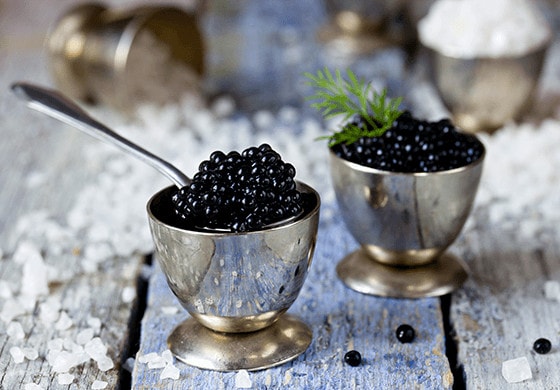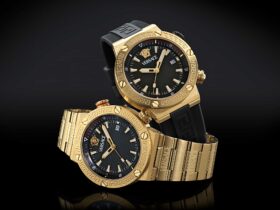
Subscribe to our Newsletter!
Get our latest news straight into your inbox

What are the Different Types of Caviar?
Just hearing the word ‘caviar’ takes you to aristocratic parties of lavish luxury and high-browed crowds. Are the pearly fish eggs still a thing? They are, and it turns out caviar might be better today than ever before.
Caviar is still a luxury commodity. At the end of the day, it’s all about supply and demand, but caviar is also more approachable today. Science has dipped its toes in the caviar industry, and now both the quality and the quantity have increased.
Here’s all you need to know about caviar, and the answer to everyone’s question, what are the different types of caviar?

What is caviar, anyway?
Caviar is salt-cured fish roe traditionally extracted from the Beluga, Sevruga or Osetra species of the sturgeon family. In the old days, caviar was either Russian or Iranian. Getting your hands on a tin of the delicacy was undoubtedly something to show off, mainly if it came from the rare Caspian Sea Belugas.
Today, sturgeons and crossings are farmed in the US, China, Israel, Italy, Saudi Arabia, Spain, and even Uruguay and Madagascar. The first way of classifying caviar is for its origin, and whether its wild-caught or farmed. Nevertheless, the single most crucial classification of caviar is its quality.
Quality levels in caviar
Color — Caviar’s color is widely used marketing-wise, but it’s less important when it comes to flavor. You’ll find everything from pearly-gray caviar, to golden-brown varieties and ink-black caviars. Although interesting to note, the following key characteristics are more valuable than the color.
Size — The size of the sturgeon eggs can vary from pea-sized Caspian Sea wild Beluga eggs to the smaller gray Sevruga eggs. You might like one over the other, but the larger the beads, the more explosive the ‘pop’ everyone loves.
Texture — Firm roe is always more satisfying than bland eggs. As a general rule, the larger the beads, the firmer they are. The weaker, broken, and damaged caviar eggs are pressed and sieved to make a caviar paste, and it’s much cheaper than whole caviar.
Flavor — For flavor, there’s no better or worse. Some caviars are nutty, buttery and creamy, and others are salty, briny and fishy. Caviar connoisseurs will taste caviar looking for flavors as you would do with fine wine.
Finish — Although subjective, some caviar has a more persistent aftertaste, which can be quite pleasing. High-quality caviar is said to have a long, sophisticated finish.
Types of caviar
There are dozens of caviar types, mainly because sturgeons have been crossbred, creating new species yielding other products. Although not properly caviar, some producers will also use the term for other fish roe such as salmon roe.

The three classic types of caviar are:
Beluga – Gray to black large, firm beads with a nice pop and a creamy mouthfeel. It often comes from the Caspian Sea, and due to overfishing, the caviar is banned in the US. Now they’re farming it in Florida.
Osetra – Gray to brown, medium-sized beads with nutty flavors and pleasant flavor complexity. The sturgeon can be farmed easier, making the caviar less expensive and more readily available.
Sevruga – Gray to black, smaller eggs compared to the types above. Widely farmed, Sevruga caviar is less expensive, but it’s enticingly briny and intensely flavored, it has a characteristic great pop.
Caviar, a world of its own
The realm of caviar is as complex as the world of wine or fine cigars, there are at least a dozen different sturgeons-related species, and new breeds are developed every year. Wild or farmed, salted, or pressed, this is an entire universe to explore.
There’s value in diversity because learning about caviar is embarking on a journey of knowledge and satisfying bites. Caviar is not reserved for upscale social events anymore, get yourself a tin of caviar, any caviar, and explore its marvels at your own pace, most importantly, share it with the ones you love!
Share This
Subscribe To Our Newsletter
Stay informed with our latest news delivered directly to your inbox.


















Leave a Review